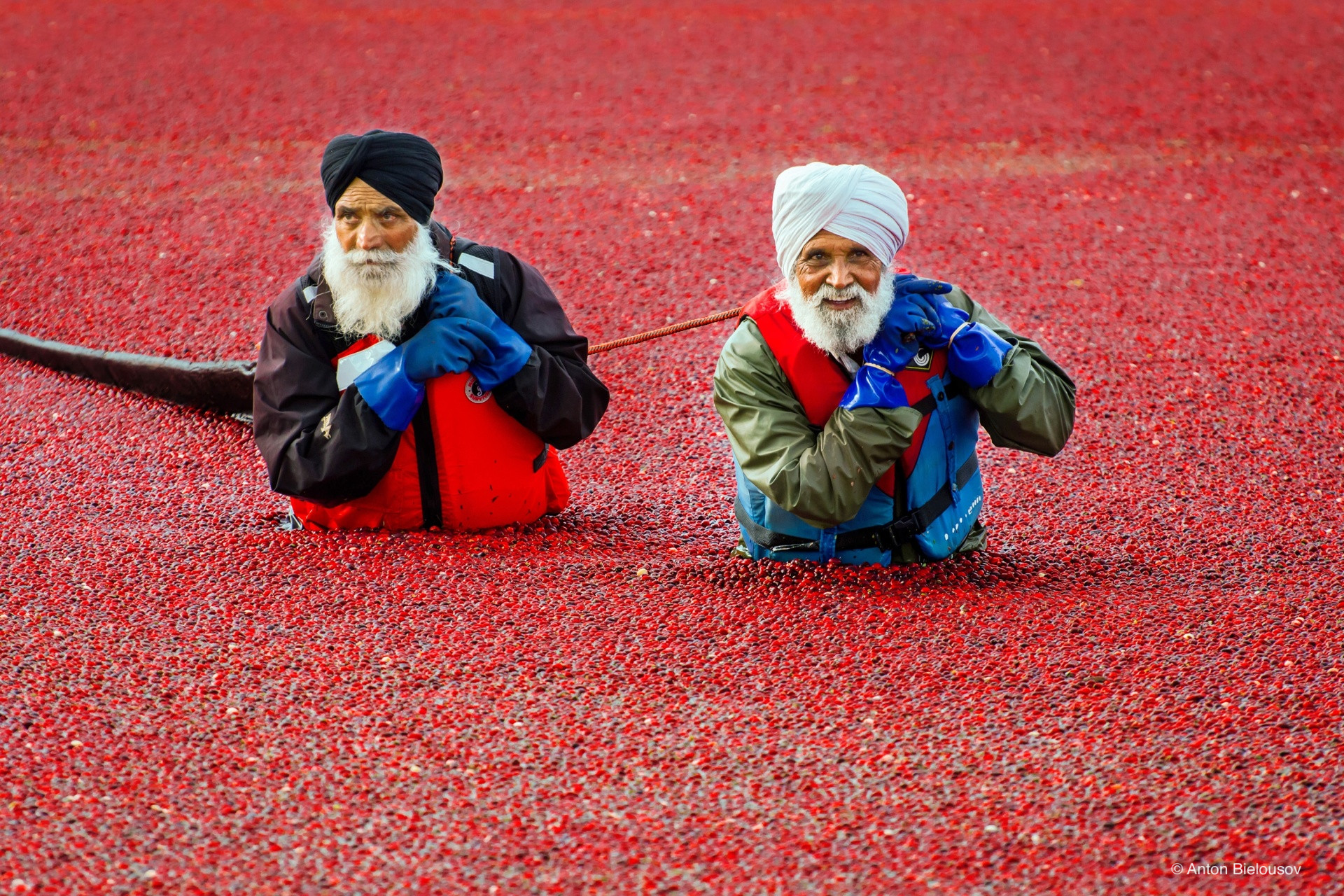“Cranberry bogs? In Vancouver? You’re kidding.”
Nope — and once you see it, you’ll never look at berries the same way again.
Nestled just a short drive from downtown Vancouver lies a spectacle that looks like a nature documentary colliding with an acid-trip: the cranberry harvest. Think endless seas of red, workers wading waist-deep through water, and thousands and thousands of floating berries. It’s dramatic. It’s bizarre. It’s utterly unforgettable.
Cranberries Float Because They’re Hollow.
Each cranberry has four internal air chambers. That’s why they bob up like little red buoys when bogs are flooded for harvest. It also explains why the wet harvest looks like a giant berry Jacuzzi.
What’s Going On Here?
- What is a cranberry (North American style)?
It’s not your Siberian swamp berry. The North American cranberry is its own species — rugged, tart, and weirdly buoyant. Because inside each berry is an air pocket, they float when released into water. - How do they harvest?
Two methods:- Dry harvesting — trudging along and picking berries directly from the bush. Tedious and only for special circumstances.
- Wet harvesting — the full cinematic version. The fields are flooded (mid-October), to a depth just over the tops of the bushes. Workers enter the bogs in waders and bash or shake the plants, dislodging berries. Then floating booms corral them, and they’re towed to shore.
Over 90% of cranberries in North America are harvested this way.
Nearly 95% of Canada’s cranberries come from British Columbia’s Fraser River Valley — roughly 17 million kilograms over 1,150 ha.
- Why is it so striking?
Because it looks like a scarlet ocean across the bogs. And you see people in waders, booms in the water, trucks waiting to scoop them up — it’s theatrical. But also, since this is Canada and apparently certain communities have a harder grip on the industry than others, it is not uncommon to see people wearing in their national clothes, which makes the look of it utterly surreal, as close as in Vancouver suburbs. - Safety note:
Workers wear life vests — yes, you can drown in a cranberry bog. Several years ago, one person drowned in Richmond while harvesting. Let’s not get too adventurous.
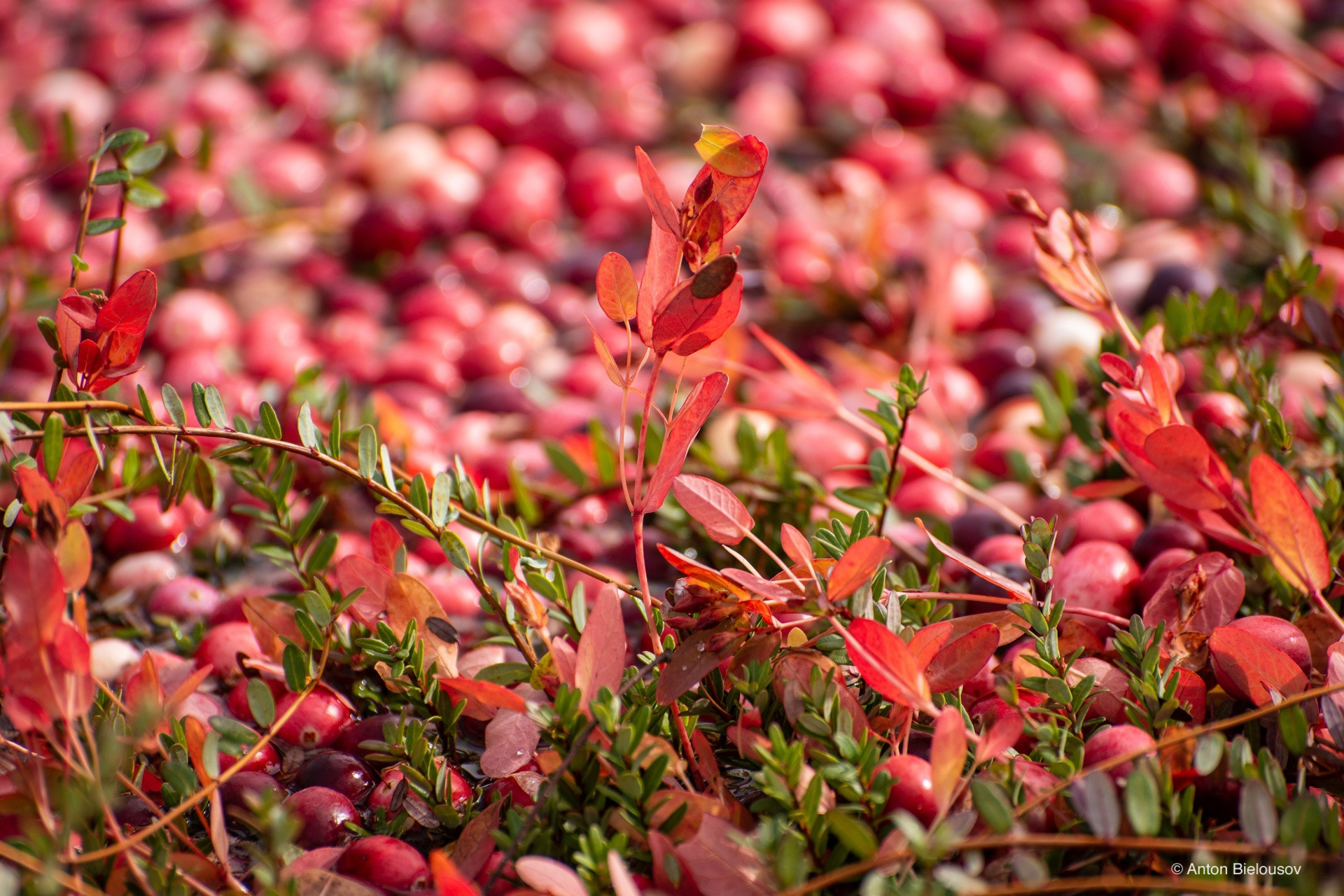
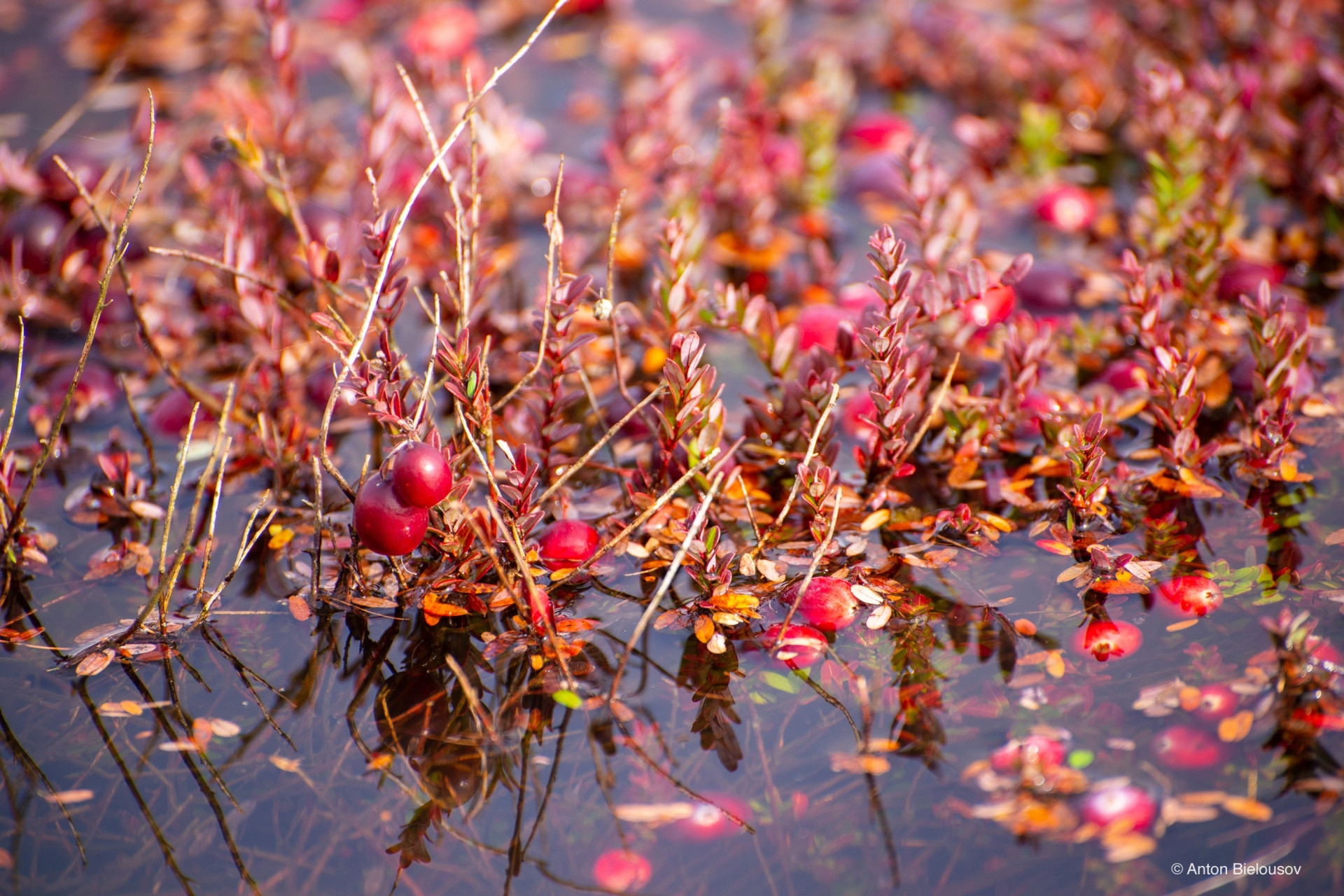
They Bounce (Literally).
Cranberries are nicknamed “bounce berries” because ripe ones can actually bounce. Farmers used to test ripeness by dropping them onto wooden boards — if they didn’t bounce, they were tossed. Imagine fruit with built-in suspension.
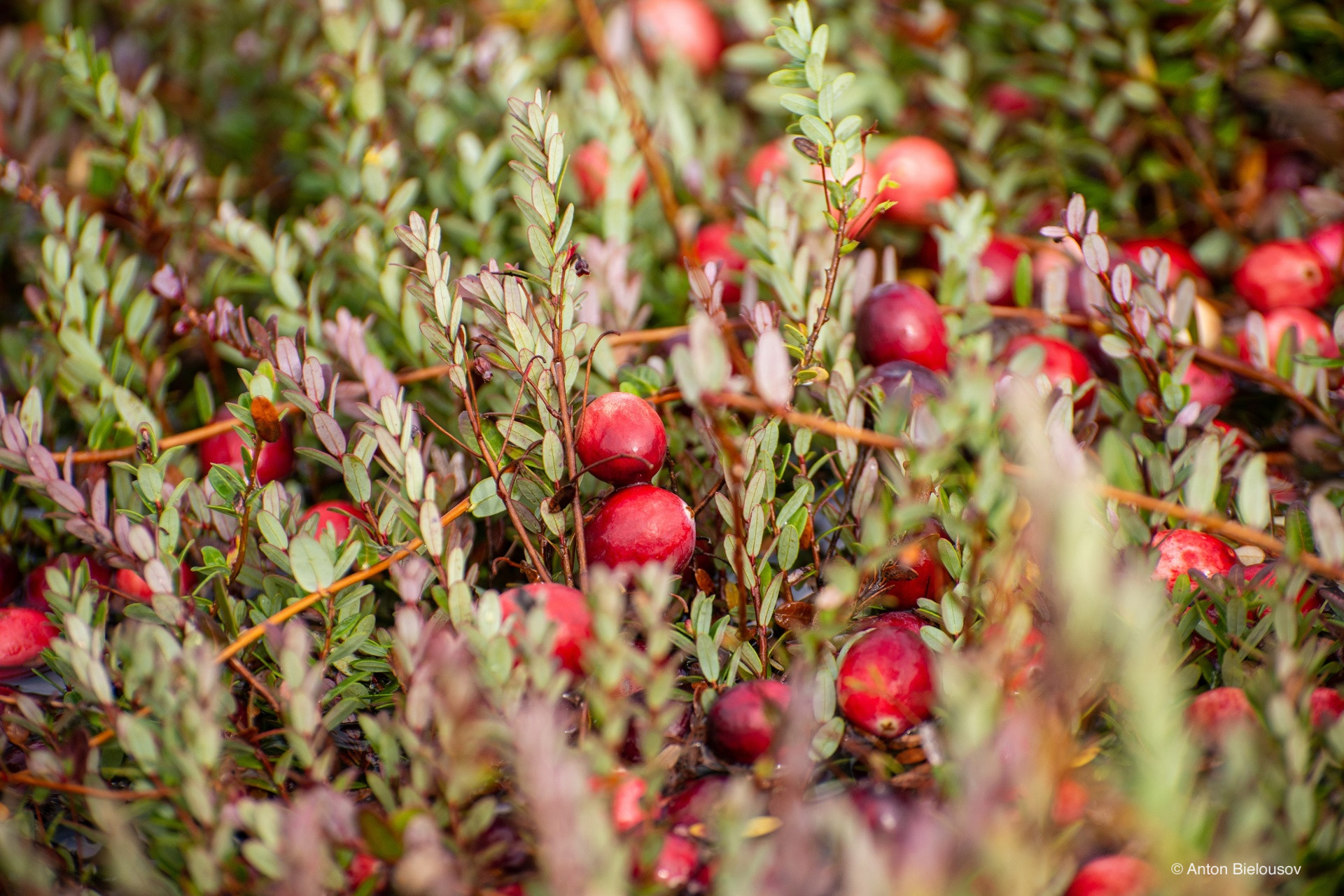
When & Where to Watch This Bonkers Harvest
Whether you visit the Best Place on Earth, or simply look what to do next weekend in Raincouver here’s your game plan:
🗓 Timing
- Mid-October to early November is peak cranberry harvest season.
- Fields are flooded and harvested in stages — you might drive past one field that’s already done and another in full swing.
- Drive the perimeter: pick a cluster of bogs and do a loop — some will be harvested, some yet to come.
- Workers operate even on weekends, so yes, you might catch the action even on a Sunday.
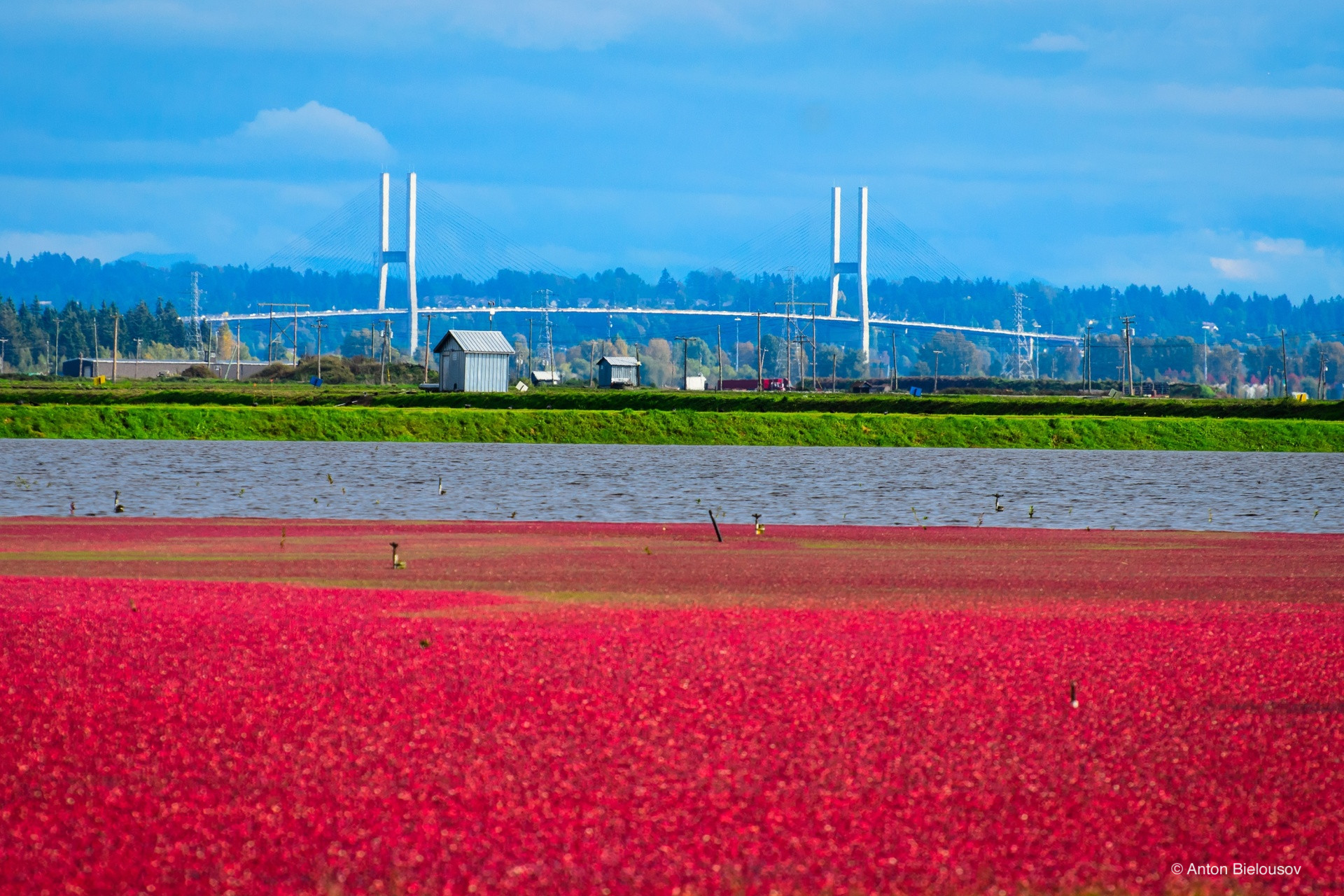
📍 Where to Go
Here are some bogs around Richmond, Pitt Meadows, and Langley that (as of that blog) often manifest for your viewing pleasure:
- 3362 No. 7 Rd, Richmond, BC V6V 1T3
- Maybog Farm, 15411 Cambie Rd, Richmond, BC V6V 1T3
- Jagbar Farms Ltd, 3011 Nelson Rd, Richmond, BC V6W 1G3
- B K Ranch Ltd, 21551 Westminster Hwy, Richmond, BC V6V 1B3
- 16982–17028 Ford Rd, Pitt Meadows, BC
- 13700–14010 Neaves Rd, Pitt Meadows, BC V3Y 0A8
- The Bog Riverside Cranberry Farm, 26885 88th Ave, Langley, BC V1M 3L8
“The Bog” Riverside cranberries farm in Langley farm is the most tourist-friendly: they run “THE CRANBERRY PLUNGE” tours (you can wade around yourself) for a modest fee in early October, with tickets available online. Great for selfies, TikToks, or just watching nature go mad.
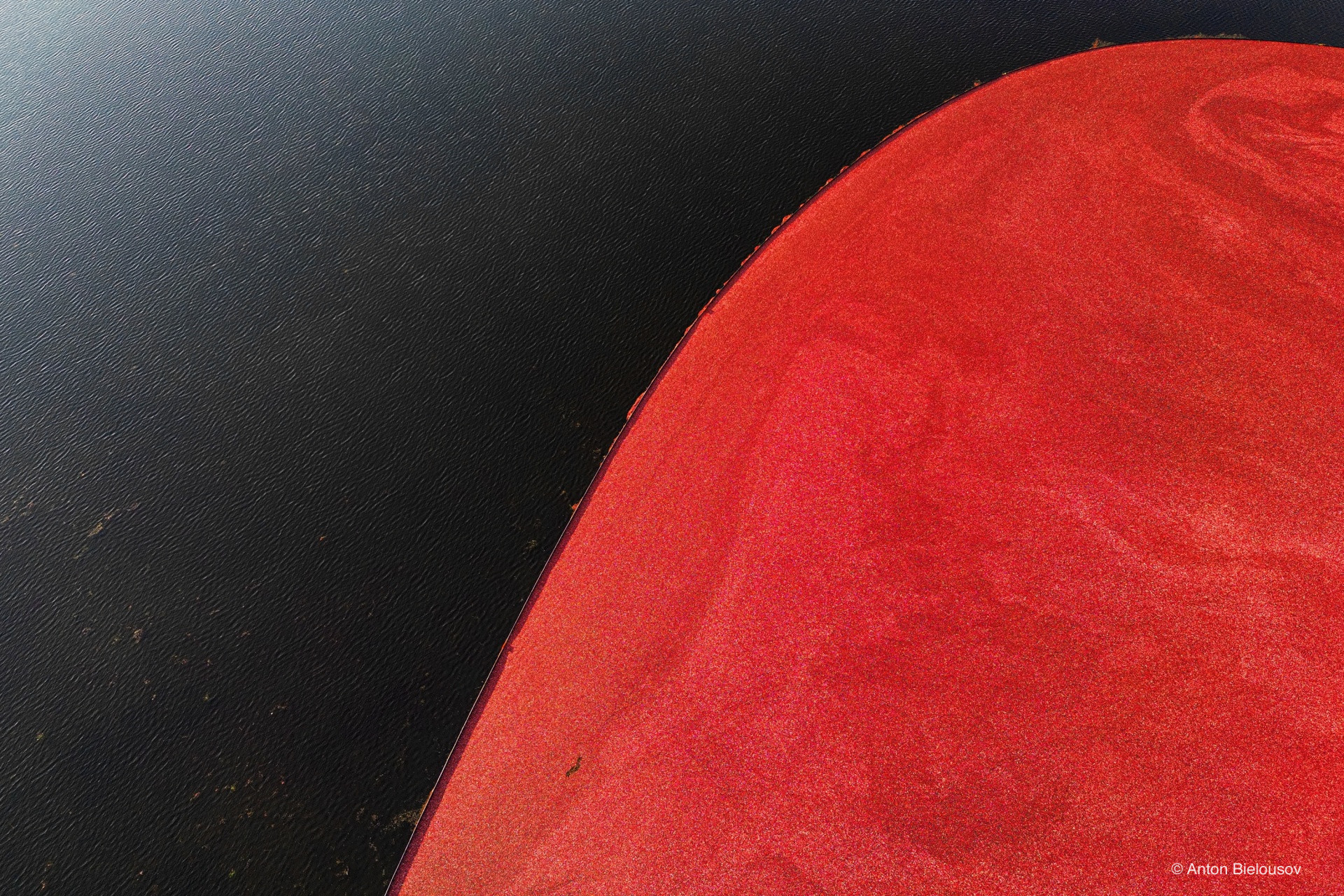
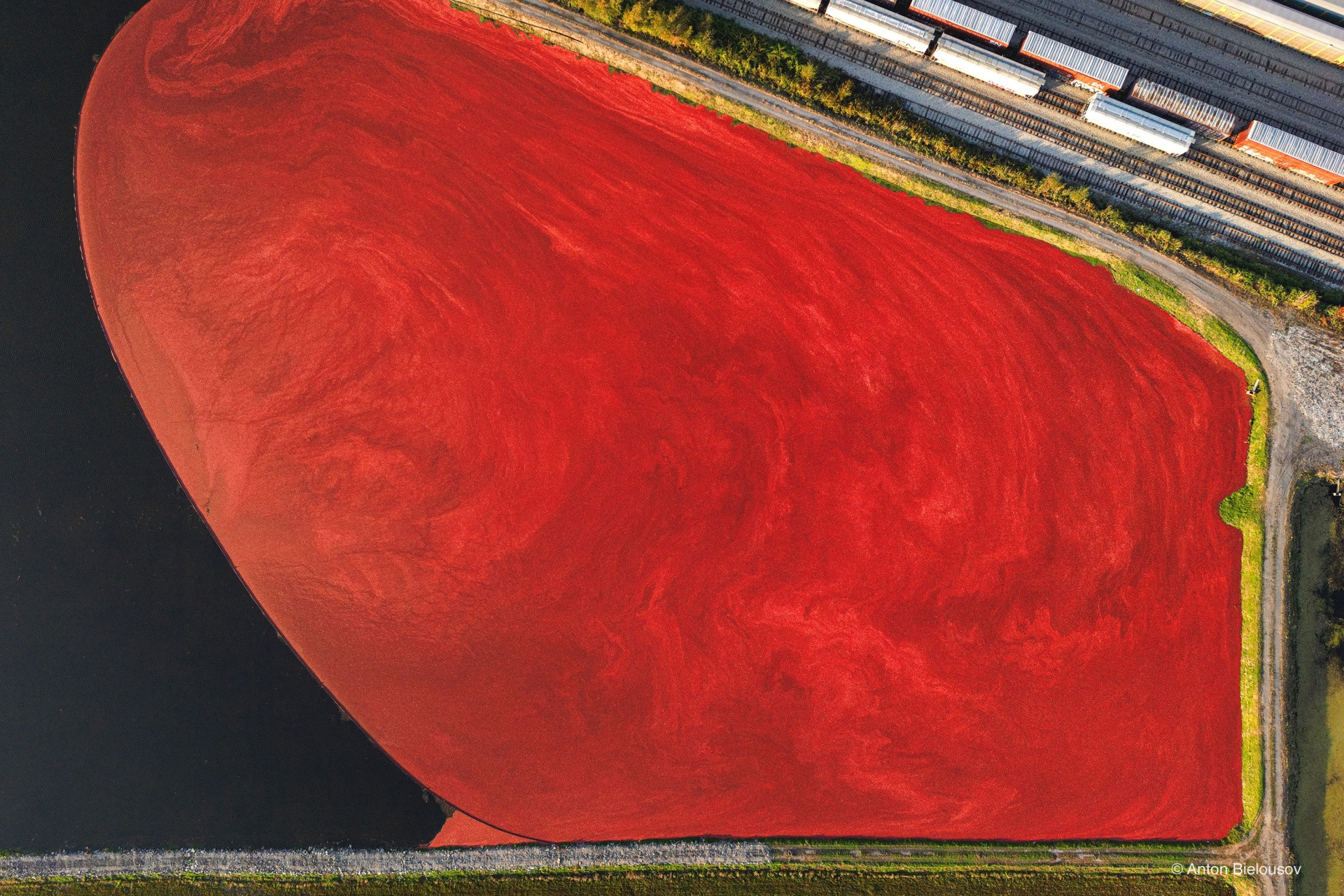
In the cranberry fields of Delta and Richmond, you’ll notice a striking constant: the harvest crews are overwhelmingly Sikh. This isn’t by accident. For decades, Punjabi Sikh immigrants and their families have formed the backbone of B.C.’s berry and farm economy. Cranberry harvest is tough, seasonal work — long hours, heavy labour, and a lot of slogging through flooded bogs in cold autumn weather. Sikh communities, many of whom settled in the Fraser Valley in the mid-20th century, built a strong tradition of agricultural labour and entrepreneurship.
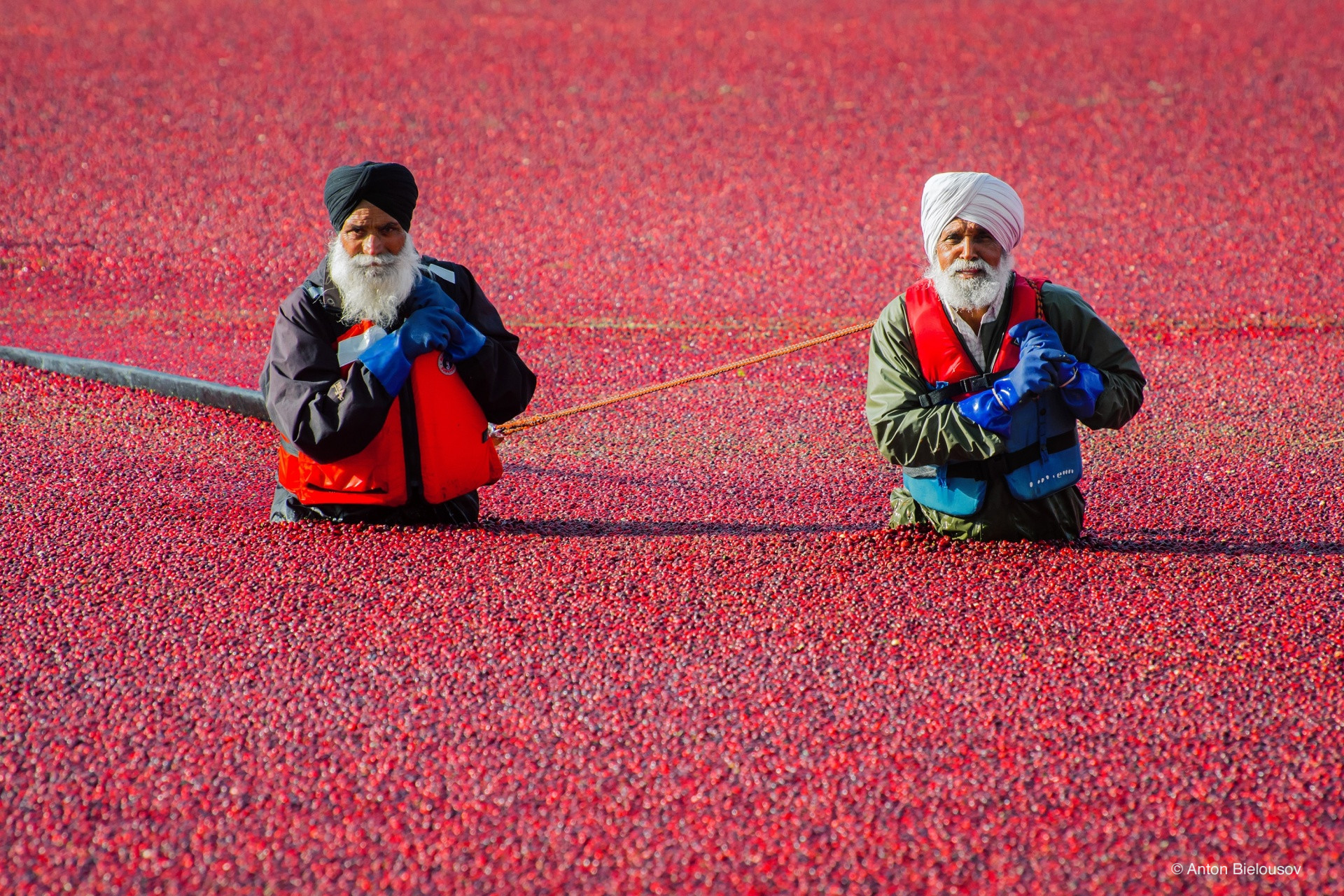
Today, you’ll find entire family networks working the bogs, some as hired hands, others as farm owners. It’s a mix of heritage, opportunity, and sheer resilience that explains why the cranberry harvest in Richmond and Delta is practically powered by Sikh muscle and dedication.
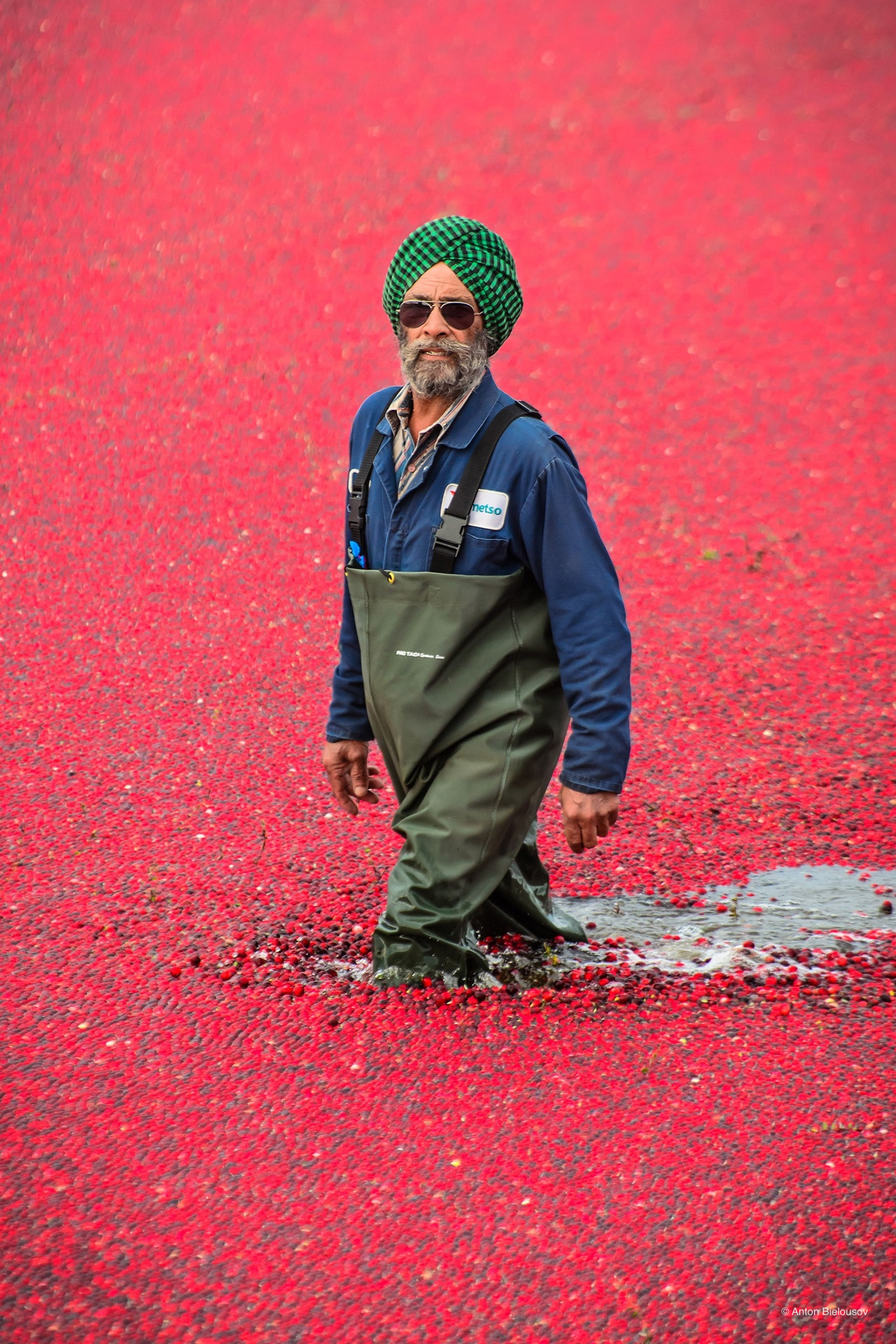
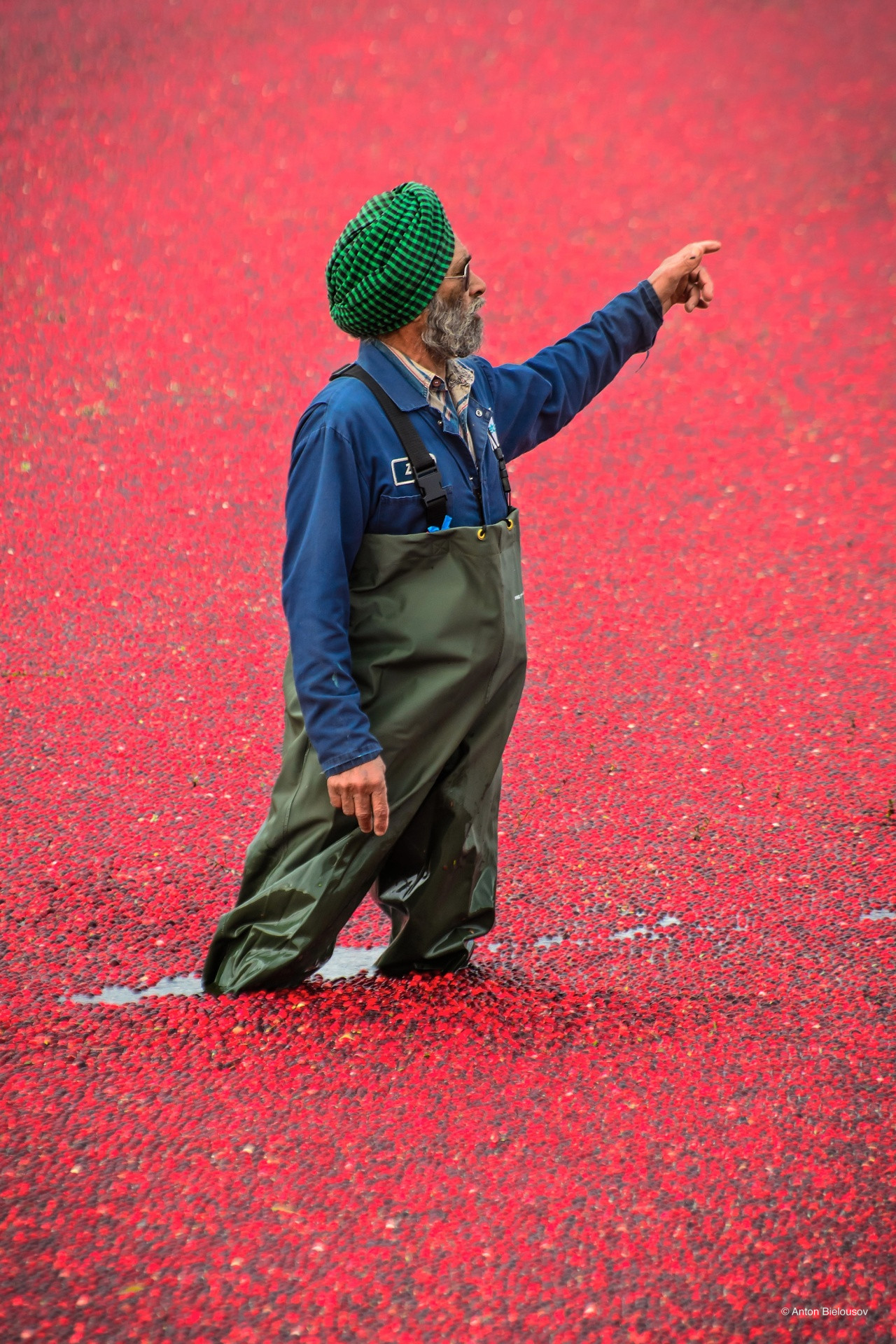
Not to mention that Delta cranberry fields offer the most surreal combination of the rural fields, south Asian workers and ever-growing modern Burnaby downtown core in the backdrop.
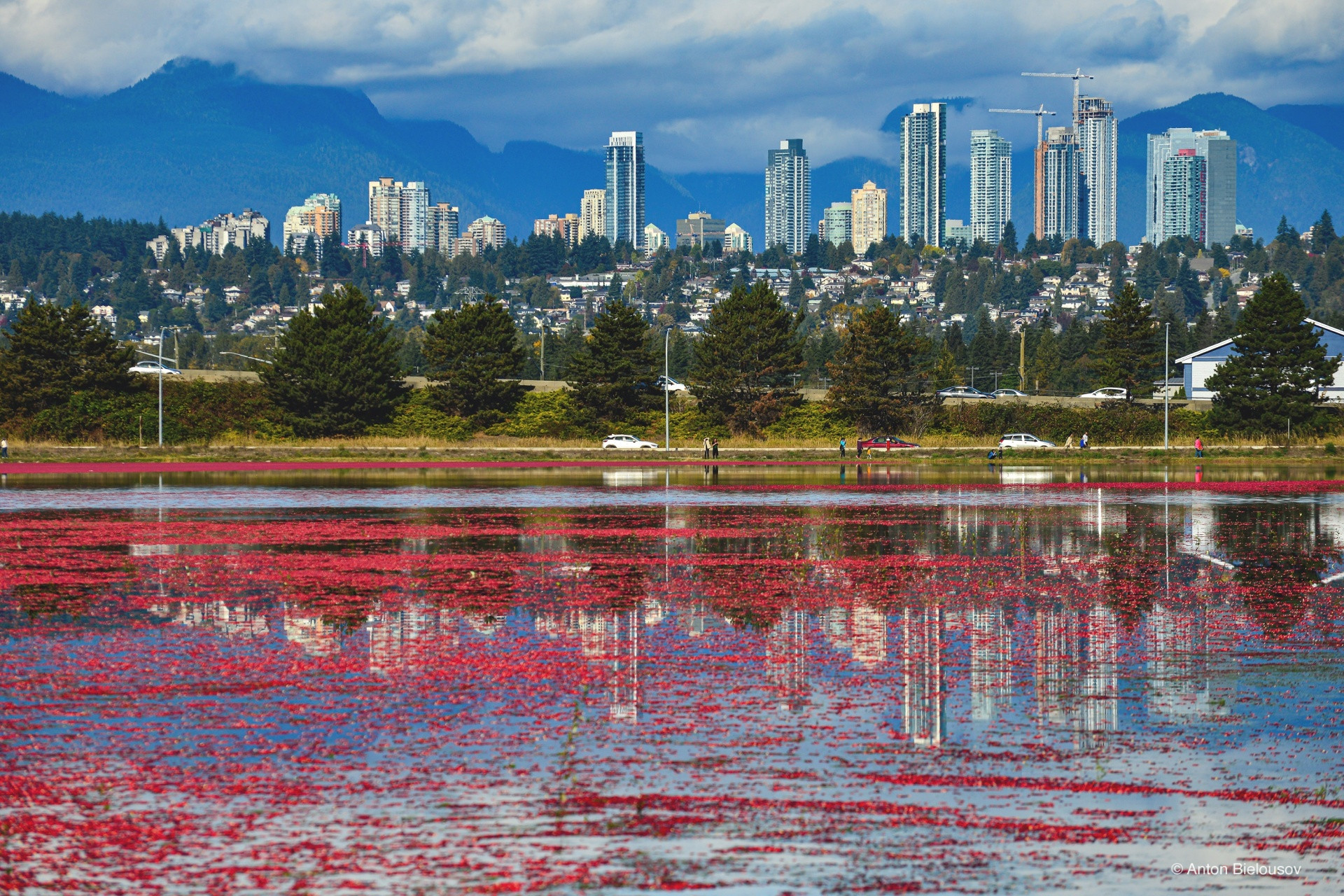
What You’ll Actually See (and Taste)
- Sea of red cranberries floating across the bog
- Workers beating, corralling, and towing berries via booms
- Trucks and conveyor belts scooping it all up
- The dramatic difference between flooded vs dry harvest
- Flavorwise? Cranberries are tart, with hints of apples. Definitely not as sweet as full-of-sugar off the shelf cranberry juice is, and arguably not as sour either. But they’re nutritional monsters: antioxidants, vitamin C, iron, etc.
Native Superfood.
Fun fact
Long before Thanksgiving cranberry sauce was invented, Indigenous peoples across North America used cranberries as food, dye, and even medicine. They mixed them with dried meat and fat to make pemmican — the ultimate protein bar of the 16th century. When the U.S. Navy went independent, cranberries were stocked on ships for their vitamin C punch (while British ships carried limes).

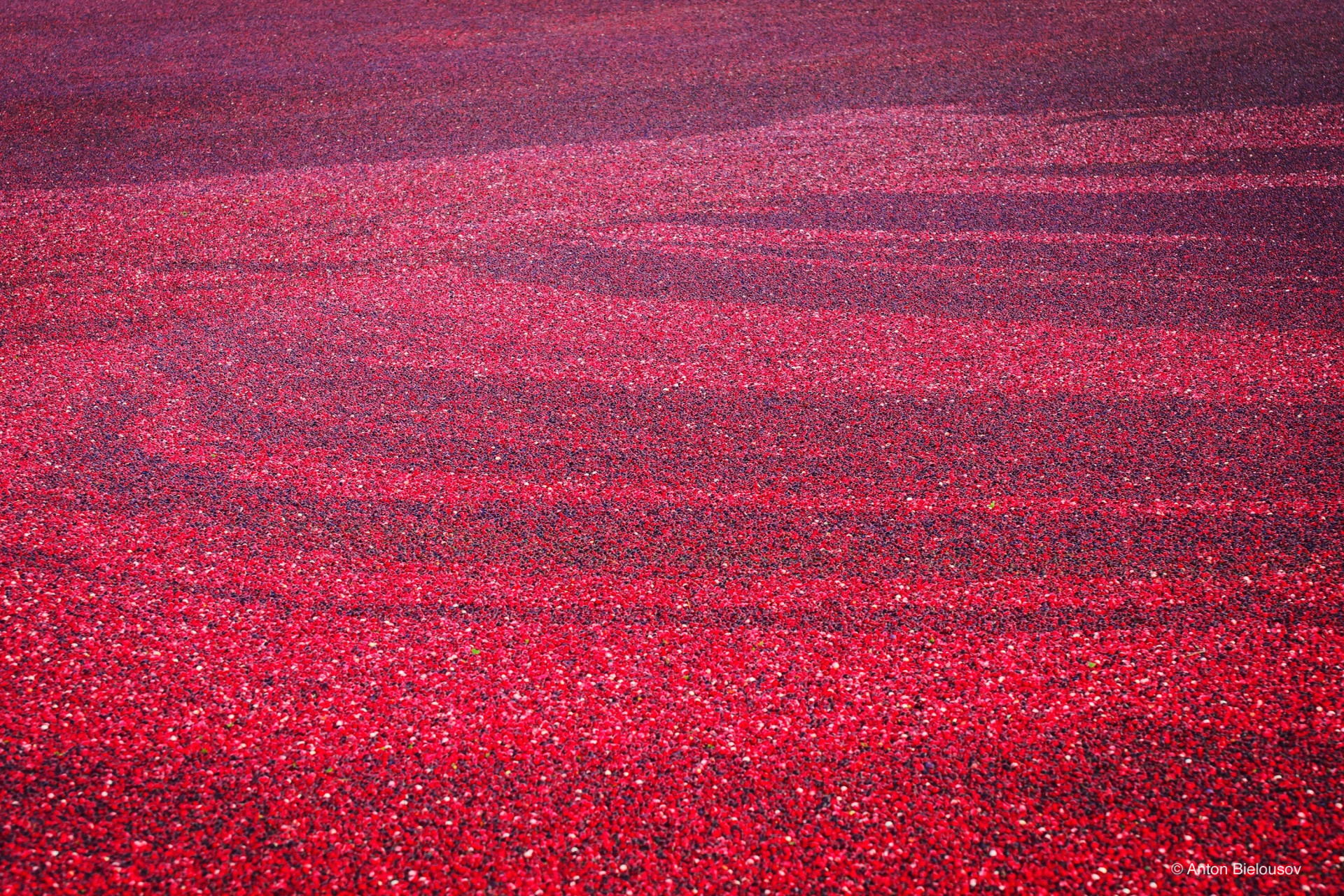
How Cranberries Are Harvested
1. Flood the Fields
In mid-October, farmers flood the cranberry bogs with water until it covers the tops of the plants. The bushes themselves are tough enough to survive, and the flooding is what sets the stage for the “red sea” you see in all those photos.
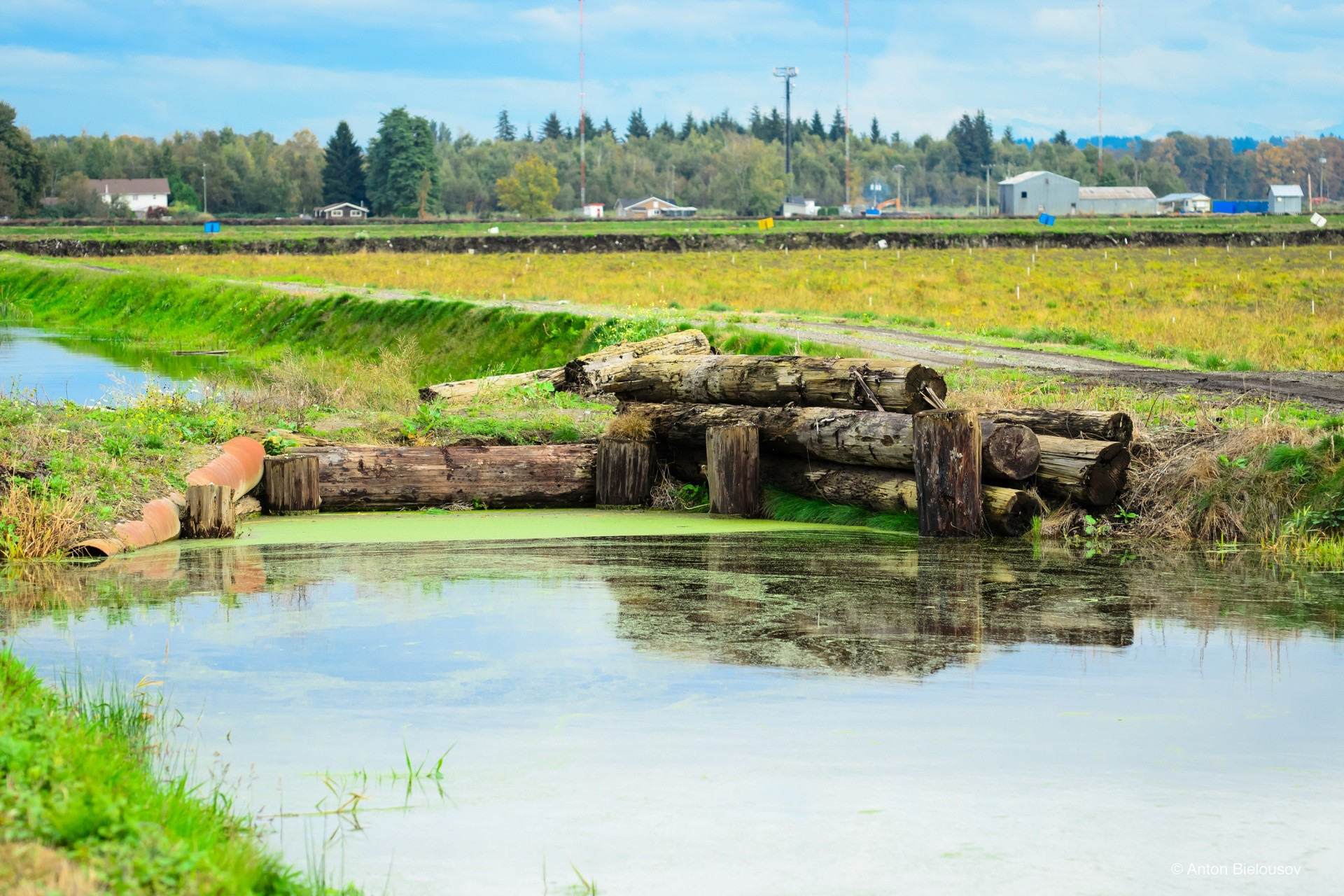
2. Shake Loose the Berries
Workers head into the bogs wearing waders (and life vests — safety first). Using special machines called eggbeaters or just mechanical shakers, they knock the berries off the vines.
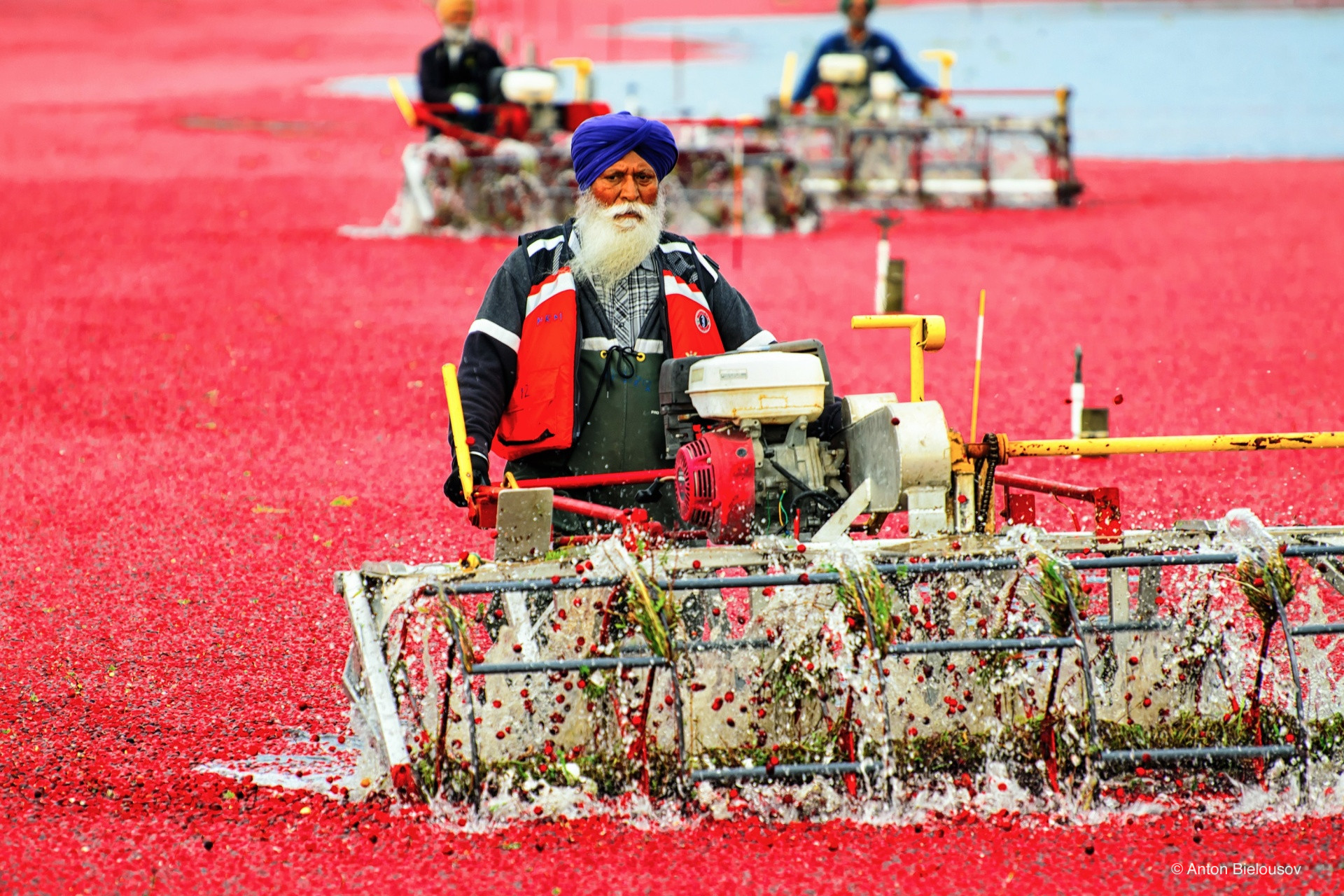
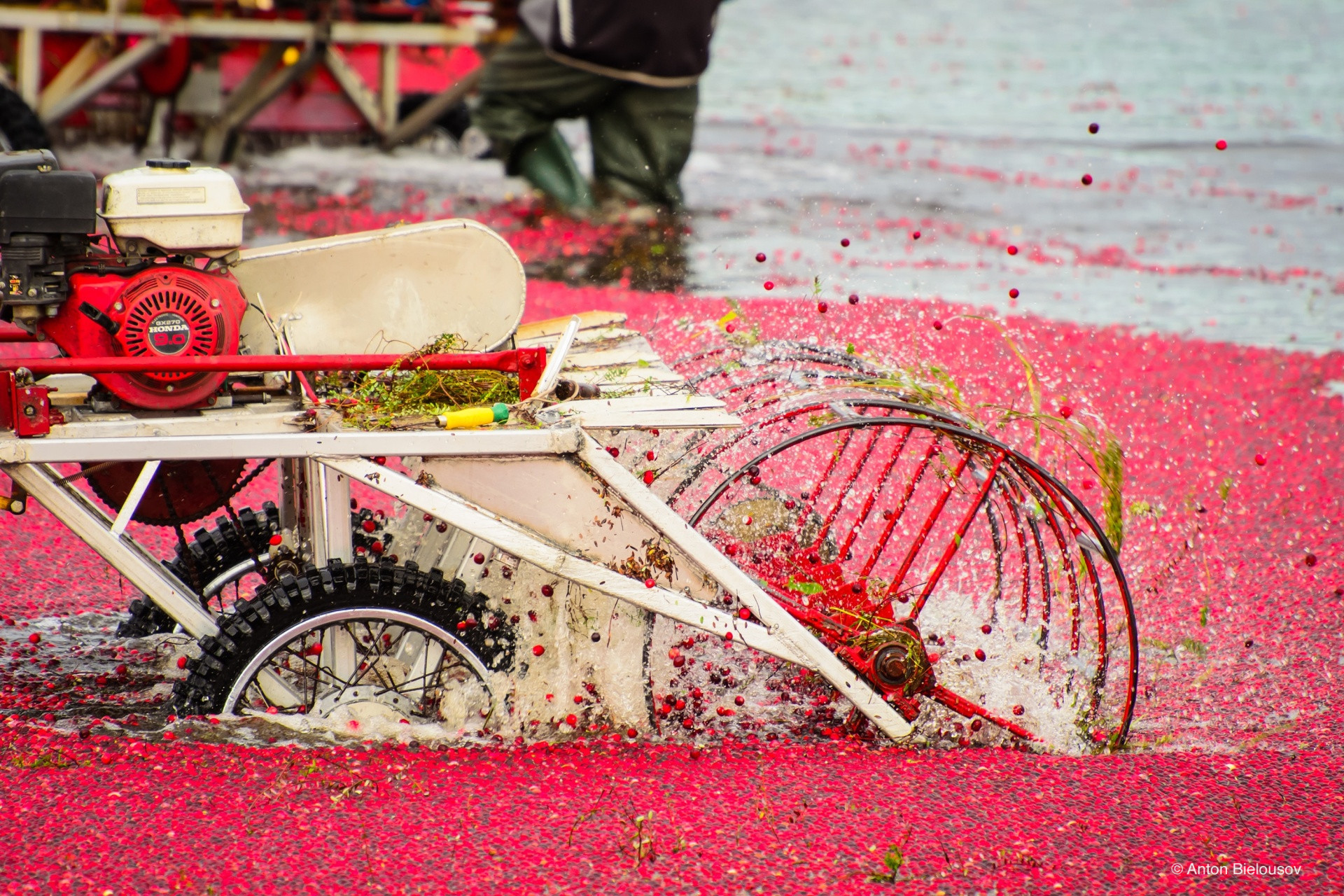
3. Let Them Float
Thanks to their hollow air chambers, cranberries naturally float to the surface like thousands of tiny red balloons. This is the magical moment when the bog turns into a giant cranberry soup.
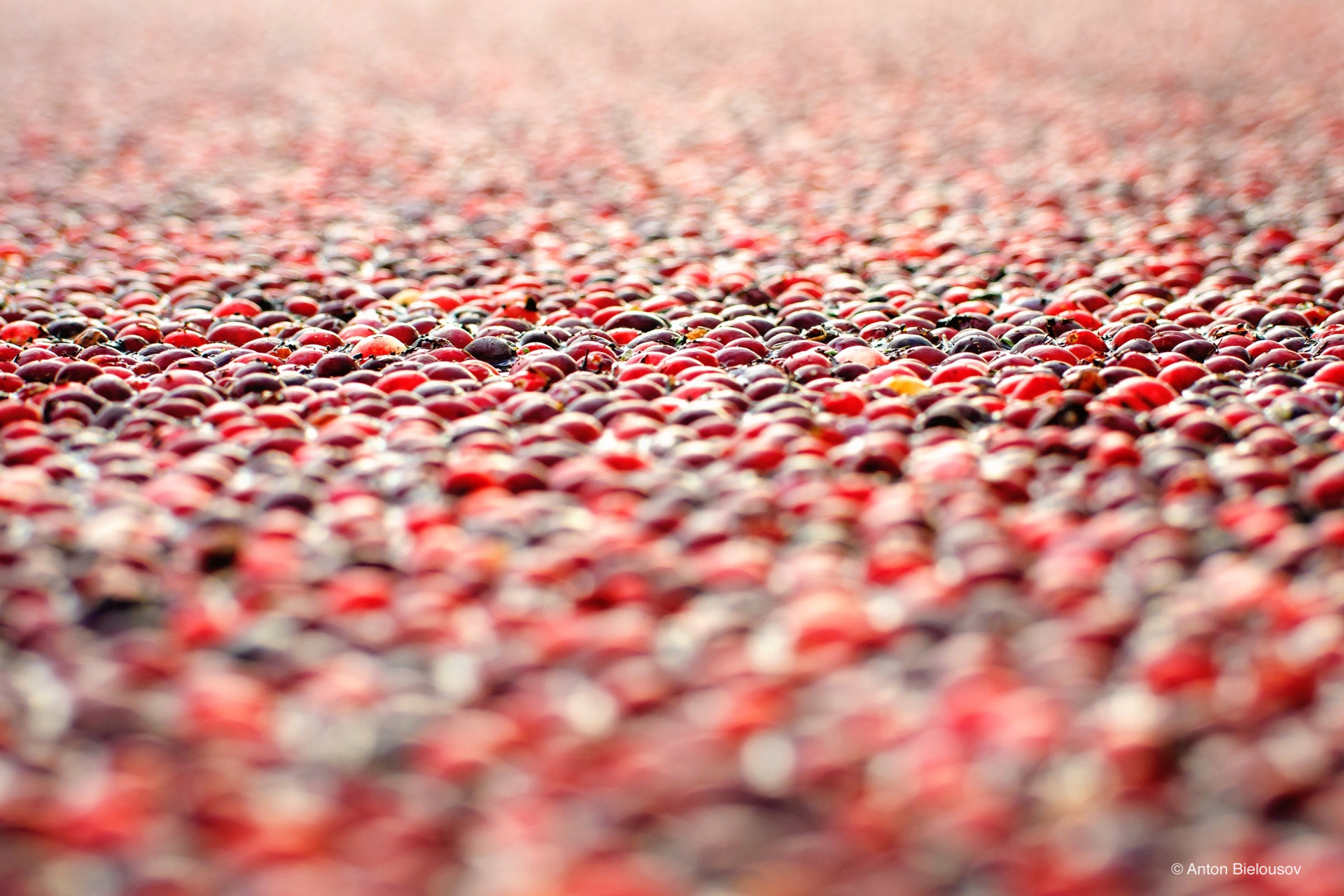
4. Round Them Up
Floating booms (long, flexible barriers) are stretched across the water to corral the berries into one corner of the bog. Think of it as a giant cranberry cattle drive, except wetter and redder.
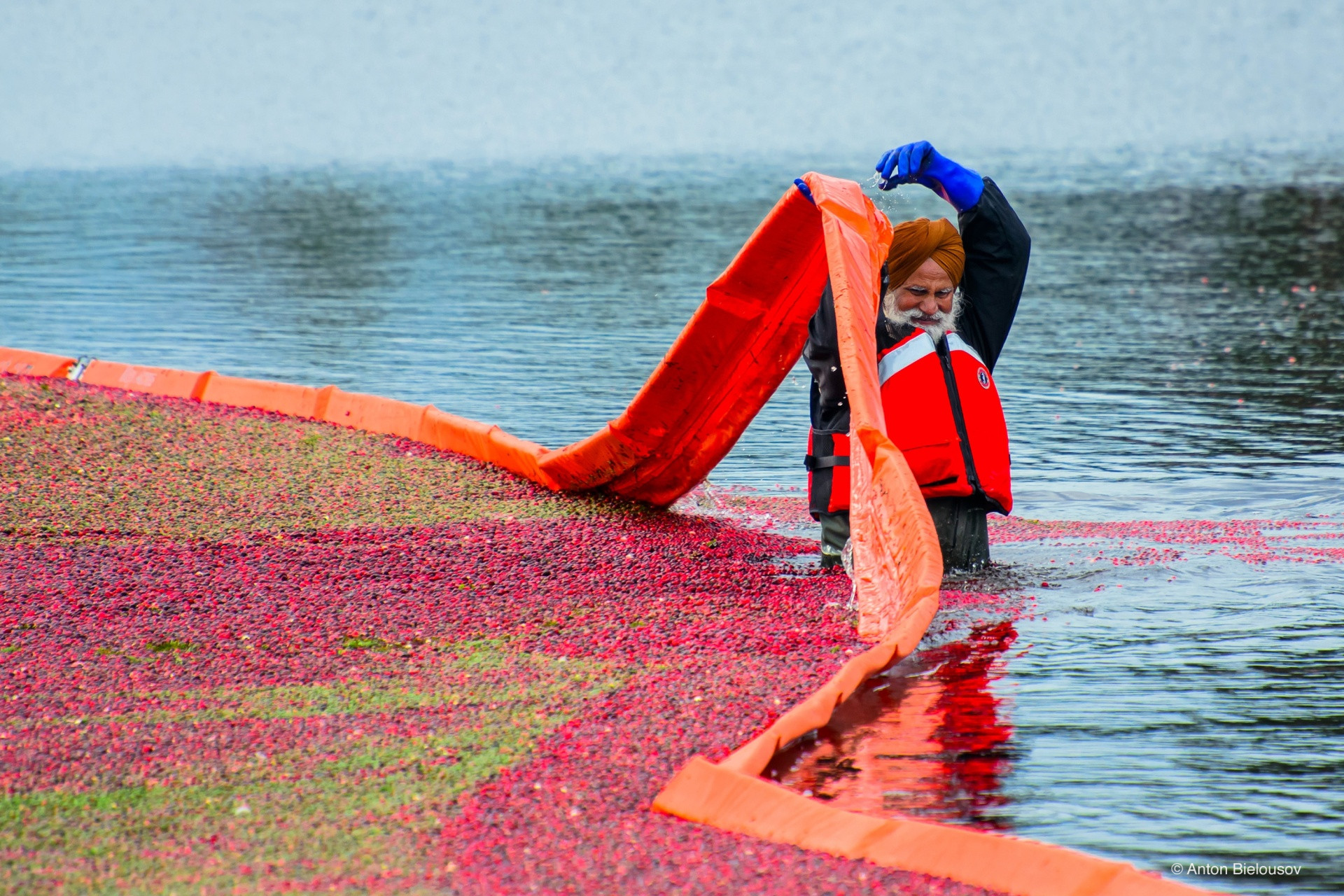
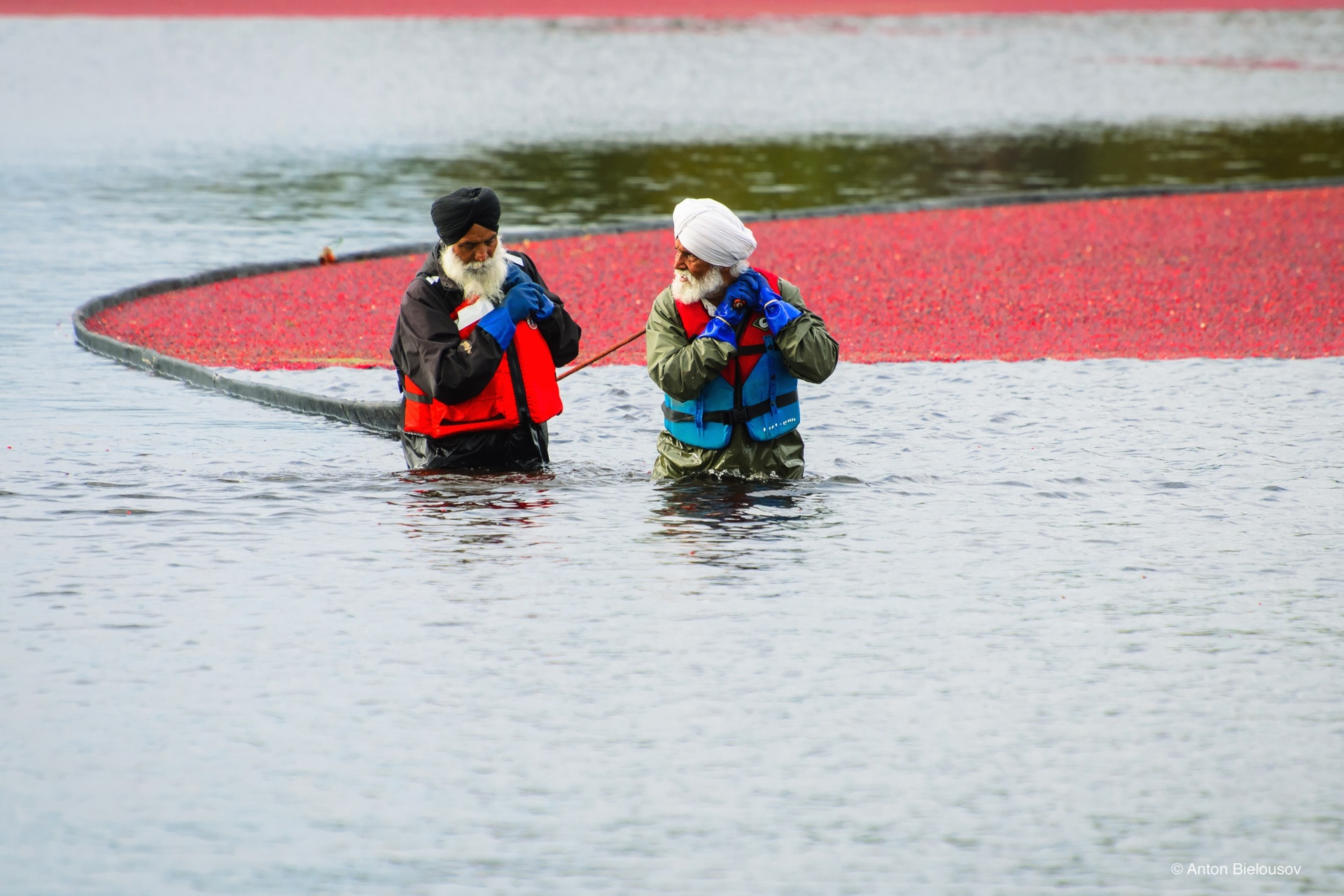
5. Suck ’Em Up
Once the berries are gathered, pumps or conveyor belts lift them out of the water and into waiting trucks. From there, they’re off to cleaning, sorting, and eventually into your juice box, sauce, or holiday stuffing.
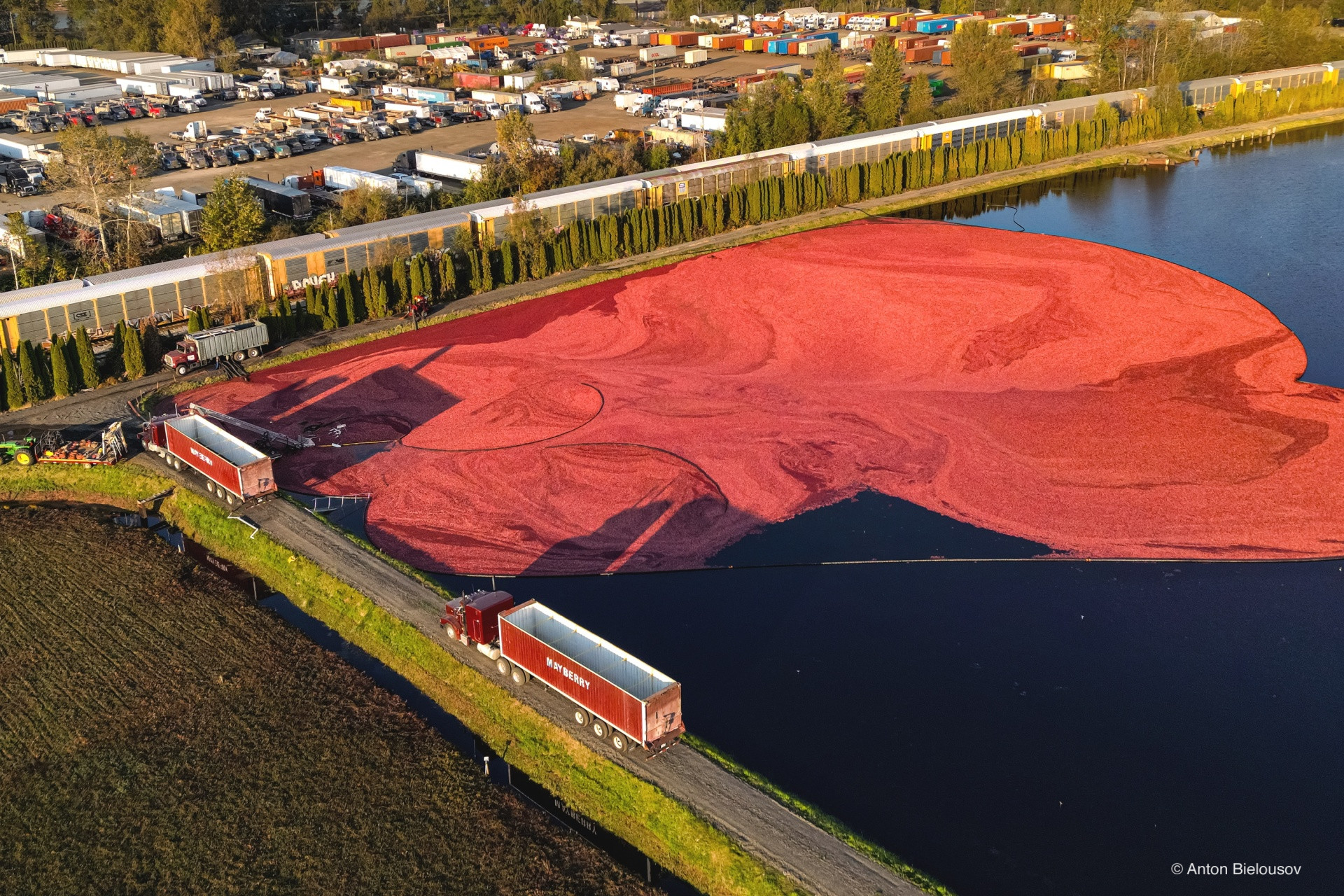
6. Drain the Bog
After the harvest, the water is drained, the plants rest, and the cycle begins again for next year.
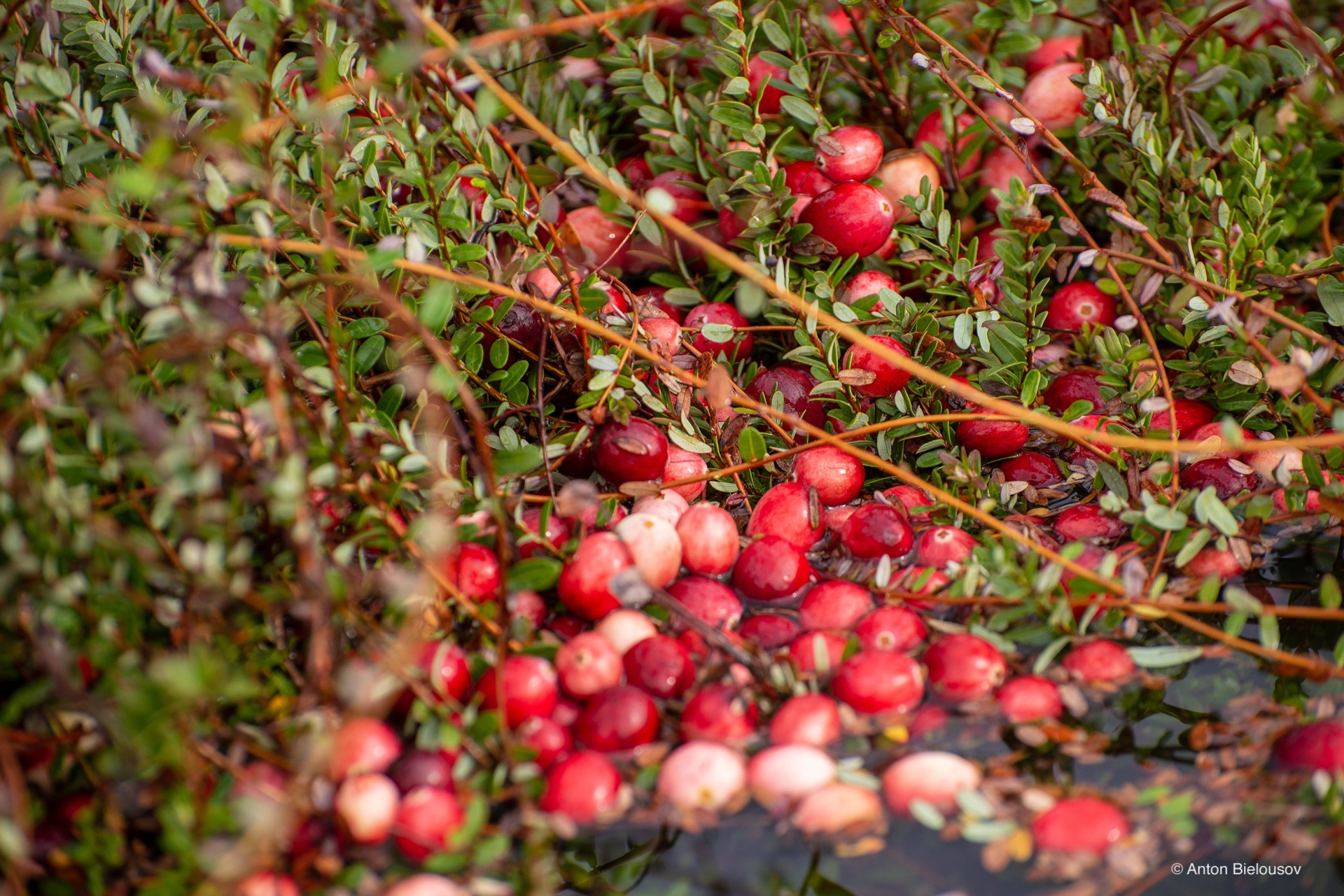
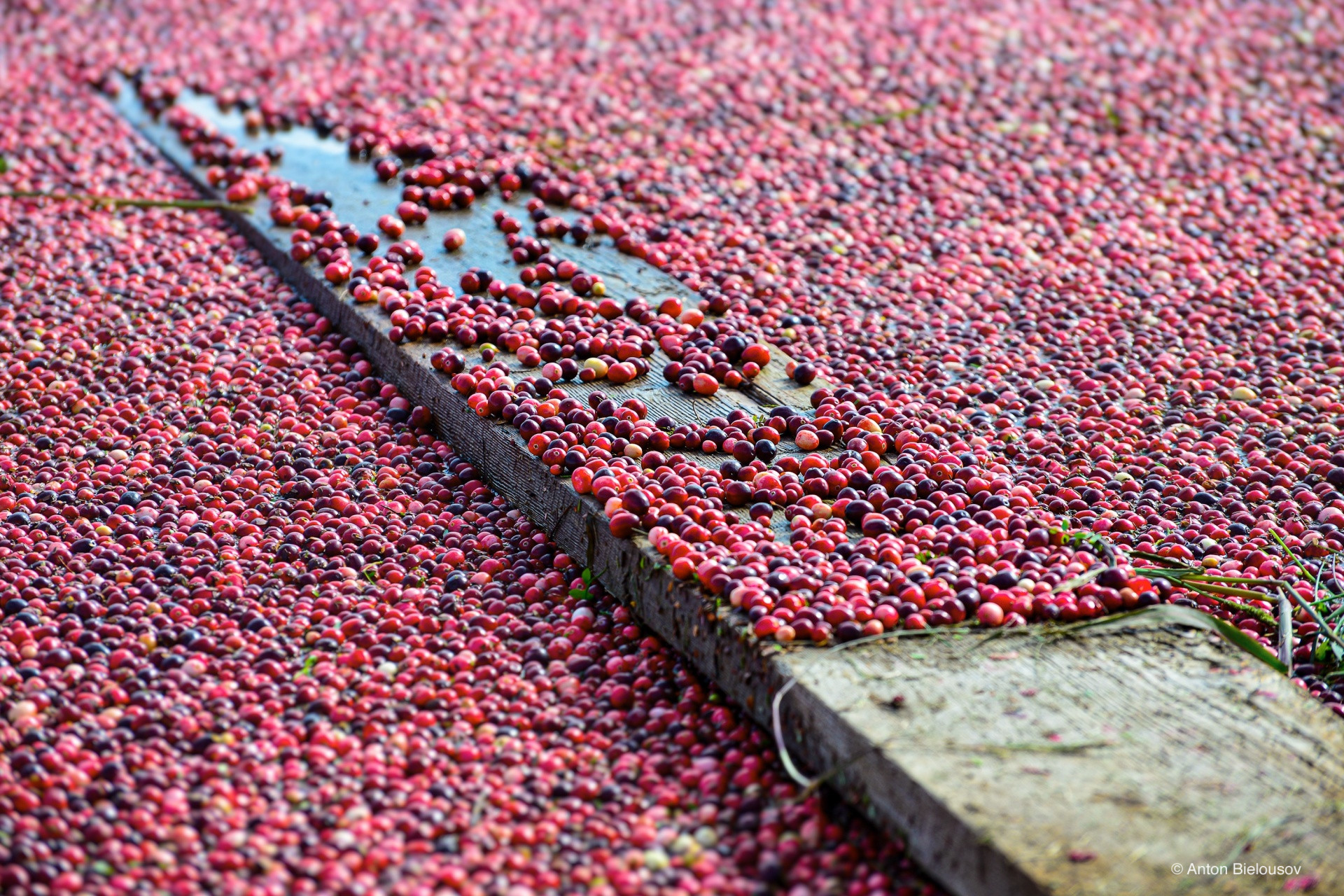
Now as I write this post, it’s the cranberry harvest season upon us and unfortunately I won’t be around Vacnouver to enjoy it this year, but if you’ve ever wanted to stare at something utterly ridiculous and beautiful at the same time, the cranberry bog harvest in BC is your ticket. It’s not Disneyland. It’s not gentle. It’s loud, red, messy — and for five minutes, you’ll wonder: why didn’t someone tell me about this before?
Speaking for the actual Cranberry Harvest Festival, there’s one in Fort-Langley, BC (I’m certain that other little towns may have one too), but this in fact has nothing to do with the amazing cranberry bog harvesting, it’s rather food and crafts market with some live music if you get very lucky.
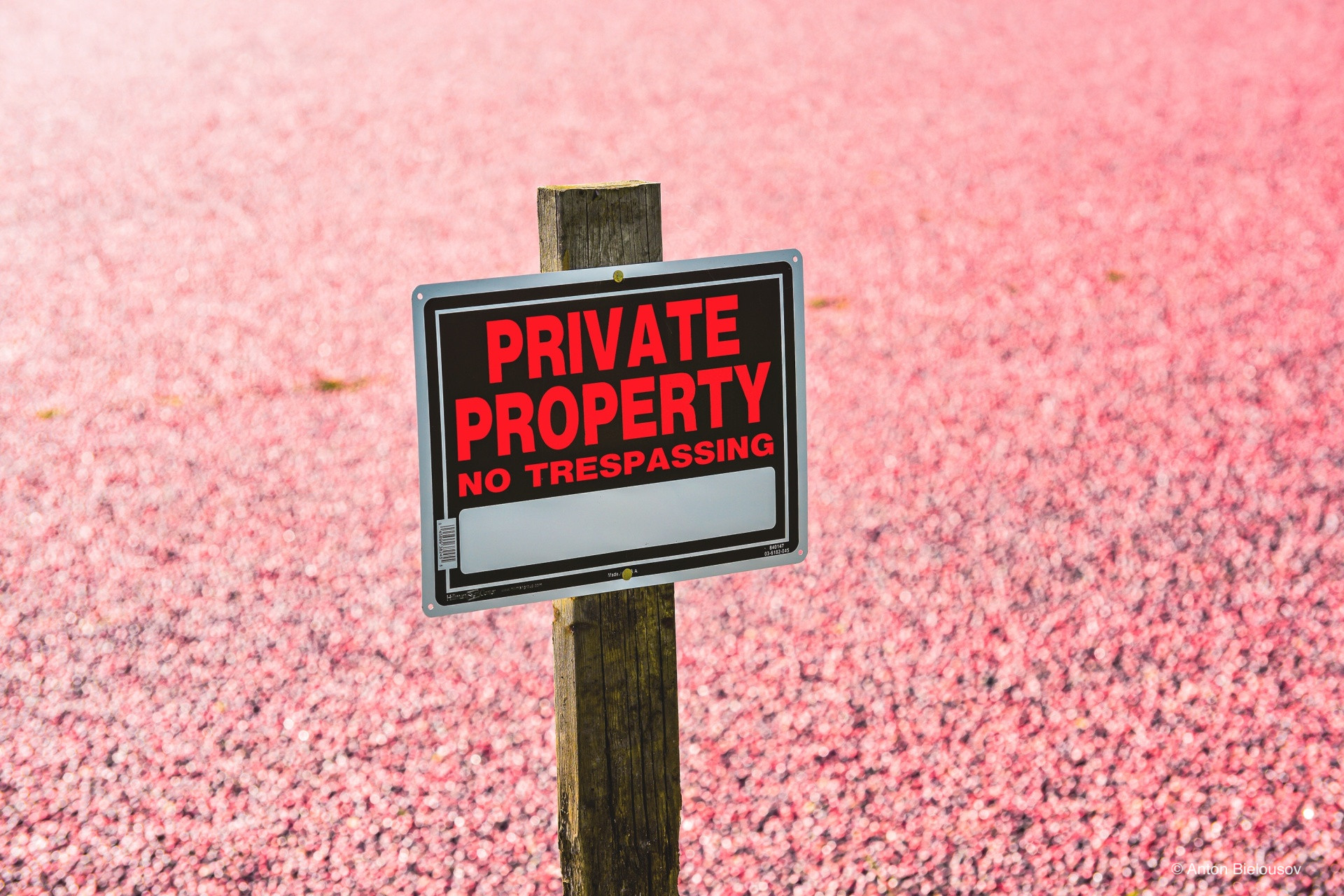
One last thing, over the years I couldn’t help but notice how tighter and tighter the access to cranberry fields becomes. With thousands of so called influ-f’ng-encers picking their nose one selfie stick too far and essentially ruining it for everyone, as some of the best fields out there start setting up tall fences and other measures that would stop one idiot from getting into a trouble and thousands from enjoying the one of a kind view.
Source: https://www.bielousov.com/2014/cranberry-bogs-harvest/

